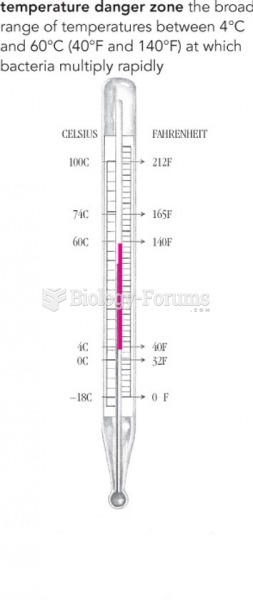|
|
|
It is difficult to obtain enough calcium without consuming milk or other dairy foods.
Blood is approximately twice as thick as water because of the cells and other components found in it.
The cure for trichomoniasis is easy as long as the patient does not drink alcoholic beverages for 24 hours. Just a single dose of medication is needed to rid the body of the disease. However, without proper precautions, an individual may contract the disease repeatedly. In fact, most people develop trichomoniasis again within three months of their last treatment.
In most climates, 8 to 10 glasses of water per day is recommended for adults. The best indicator for adequate fluid intake is frequent, clear urination.
There are 60,000 miles of blood vessels in every adult human.
 Humpbacks frequently breach, throwing two thirds or more of their bodies out of the water and splash
Humpbacks frequently breach, throwing two thirds or more of their bodies out of the water and splash
 Aneurysm. Photograph of the aorta, the large blood vessel arising from the heart, with a large bulge
Aneurysm. Photograph of the aorta, the large blood vessel arising from the heart, with a large bulge





